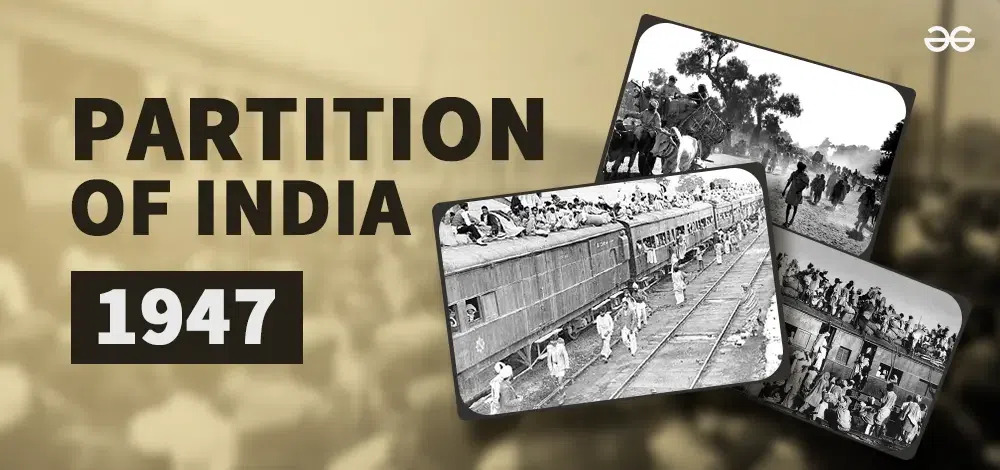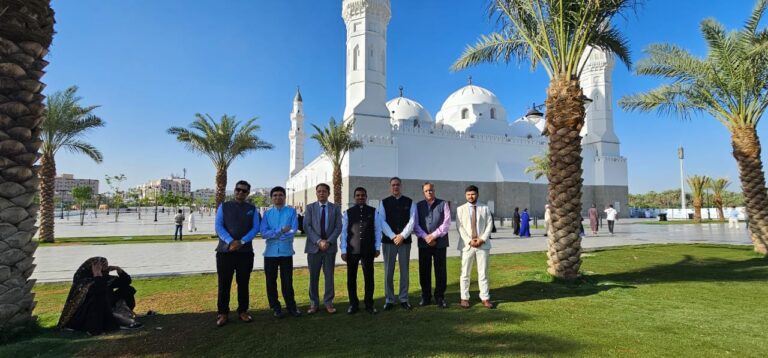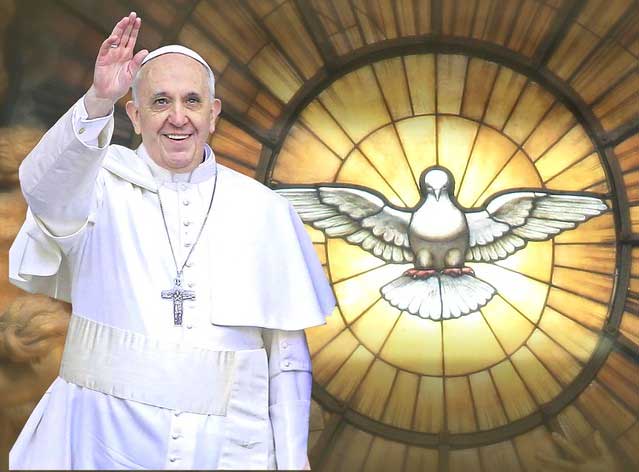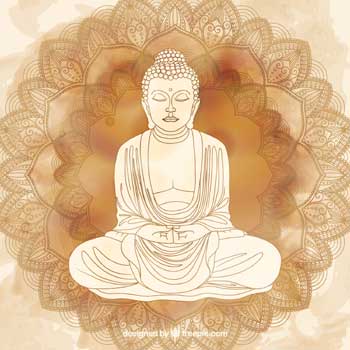
The Partition of India in 1947: A Detailed Exploration
The Partition of India in 1947 remains one of the most significant and traumatic events in modern history, marking the end of British colonial rule in the Indian subcontinent and the creation of two independent nations, India and Pakistan. This monumental division reshaped the political, social, and cultural landscape of South Asia, leaving a legacy of unresolved tensions and deep scars. This article explores the key figures, events, and consequences of the partition, offering a comprehensive analysis of the roles played by Mohammad Ali Jinnah, the Indian National Congress, Mahatma Gandhi, the British, and the millions of ordinary people who endured the upheaval.
The Background of Partition
British Colonial Rule
The British East India Company established control over India in the mid-18th century, gradually consolidating power. By 1858, following the Indian Rebellion of 1857, the British Crown took direct control. Over the next century, colonial policies exploited India’s resources, leading to widespread poverty, resentment, and growing demands for self-rule.
Rise of Nationalism
The late 19th and early 20th centuries saw the emergence of Indian nationalism. The Indian National Congress (INC), formed in 1885, became the primary platform for political dialogue. Initially advocating for moderate reforms, the INC evolved into a mass movement demanding independence. Meanwhile, the All-India Muslim League, founded in 1906, sought to represent Muslim interests.
Key Figures in the Partition
Mohammad Ali Jinnah
Mohammad Ali Jinnah, a lawyer and politician, initially supported Hindu-Muslim unity and joined the INC in 1906. However, he later became disillusioned, perceiving a lack of adequate representation for Muslims. By the 1930s, Jinnah emerged as the leader of the Muslim League, advocating for a separate Muslim state. His insistence on the “Two-Nation Theory” argued that Hindus and Muslims were distinct nations with irreconcilable differences.
Jinnah’s leadership was instrumental in the creation of Pakistan. His pragmatic yet unyielding approach, coupled with his negotiation skills, secured significant concessions during partition discussions. However, his health—he was suffering from tuberculosis—and the rapid timeline of partition added to the challenges of establishing Pakistan.
The Indian National Congress
The INC was the principal force behind India’s struggle for independence. Leaders like Jawaharlal Nehru, Sardar Vallabhbhai Patel, and Mahatma Gandhi played pivotal roles in negotiations. The INC aimed for a united, secular India but faced challenges in addressing the concerns of minority groups.
The Road to Partition
Simla Conference (1945)
The Simla Conference, convened by the British, aimed to discuss India’s future. However, disagreements between the INC and the Muslim League, particularly over representation, led to its failure.
Elections of 1946
The elections of 1946 further polarized the political landscape. The Muslim League’s strong performance reinforced its demand for Pakistan, while the INC continued to advocate for a united India.
Direct Action Day (1946)
On August 16, 1946, the Muslim League called for “Direct Action Day” to press for Pakistan. The resulting communal riots, particularly in Calcutta, led to massive violence and loss of life, exacerbating Hindu-Muslim tensions.
was it a plan of jinnah to divide india
The question of whether Jinnah planned to divide India is complex and subject to interpretation. Jinnah’s initial political stance was rooted in a desire for Hindu-Muslim unity, as seen in his early involvement with the Indian National Congress. However, by the 1930s, he became convinced that Muslims would not receive adequate representation and protection in a united India dominated by the Hindu-majority Congress.
Jinnah’s advocacy for the creation of Pakistan, formalized through the Lahore Resolution of 1940, marked a turning point. While he championed the Two-Nation Theory, arguing that Hindus and Muslims were distinct nations, some historians believe that Jinnah initially used the demand for Pakistan as a bargaining chip to secure greater autonomy and safeguards for Muslims within a united India. However, the failure of negotiations, such as the Cabinet Mission Plan of 1946, and the escalating communal violence made partition appear inevitable.
In summary, while Jinnah did advocate for a separate state, whether partition was his ultimate goal from the beginning or a consequence of political and social developments remains debated. The rapid and violent execution of the partition process was shaped by multiple factors, including British policies, Congress’s stance, and growing Hindu-Muslim tensions, rather than solely Jinnah’s intentions.
The Role of Mahatma Gandhi
Mahatma Gandhi, known as the “Father of the Nation,” was a staunch advocate of non-violence and communal harmony. He opposed the partition, believing in a united India where Hindus and Muslims could coexist. Despite his efforts, Gandhi’s influence waned as communal violence escalated and political leaders prioritized pragmatic solutions.
Gandhi’s attempts to quell riots by fasting and traveling to affected areas demonstrated his commitment to peace. However, his vision was overshadowed by the realities of political negotiations and escalating violence.
The Role of the British
The British played a decisive role in partition. Weakened by World War II, they sought a quick exit from India. Lord Louis Mountbatten, the last Viceroy, expedited the process, advancing the timeline for independence from June 1948 to August 15, 1947. This rushed approach left inadequate time for a proper boundary demarcation and transfer of power, contributing to chaos.
The Boundary Commission
The Boundary Commission, led by Sir Cyril Radcliffe, was tasked with drawing the borders of India and Pakistan. With limited time and understanding of local complexities, Radcliffe’s decisions divided provinces like Punjab and Bengal, displacing millions. His boundary lines were criticized for being arbitrary and exacerbating tensions.
The Partition Riots
The partition triggered one of the largest and bloodiest migrations in history. Over 15 million people were displaced as Hindus and Sikhs moved to India, and Muslims migrated to Pakistan. Communal violence erupted on an unprecedented scale, with estimates of up to two million deaths.
Women were particularly vulnerable, with thousands subjected to abduction, rape, and forced conversions. Families were torn apart, and entire communities were decimated.
Aftermath and Legacy
Creation of Pakistan
Pakistan emerged as a homeland for Muslims, comprising West Pakistan (modern-day Pakistan) and East Pakistan (now Bangladesh). However, the nascent state faced significant challenges, including political instability, economic struggles, and integrating diverse ethnic groups.
Challenges in India
India faced its own challenges, including the integration of princely states, managing refugee crises, and addressing communal tensions. The assassination of Mahatma Gandhi in January 1948 by a Hindu nationalist further highlighted the fractured state of Indian society.
Kashmir Conflict
One of the unresolved issues from partition was the princely state of Jammu and Kashmir. Its accession to India led to the first Indo-Pak war in 1947-48 and remains a contentious issue to this day.
Conclusion
The Partition of India in 1947 was a watershed moment that reshaped the subcontinent. While it granted independence, it came at an enormous human cost, leaving deep wounds and unresolved disputes. Understanding the complex interplay of political, social, and historical forces behind partition is essential to comprehending its enduring impact on South Asia.
The role of Indian Muslims in voting for a separate country for Muslims.
Culminating in the creation of Pakistan—was a pivotal factor in the Partition of India in 1947. However, it is important to understand the diversity of opinions, aspirations, and circumstances among Indian Muslims during this period. Their political decisions were influenced by a complex interplay of social, economic, and regional factors.
The Elections of 1946: A Crucial Turning Point
The provincial elections of 1946 are often seen as a referendum on the question of Pakistan. The All-India Muslim League, led by Mohammad Ali Jinnah, campaigned on the demand for a separate Muslim state. The League’s success in these elections was a major factor in legitimizing its claim to represent Indian Muslims. Here’s a breakdown of the role Indian Muslims played:
Widespread Support for the Muslim League
- Election Results:
- The Muslim League won 90% of the Muslim seats in the elections to the provincial legislatures, consolidating its position as the representative of Muslim interests.
- This electoral success was particularly significant in provinces with a substantial Muslim population, such as Punjab, Bengal, and Sindh.
- Impact of the League’s Campaign:
- The Muslim League’s slogan of “Islam in Danger” and its promise of a separate homeland resonated with many Muslims who feared marginalization in a Hindu-majority India.
- Jinnah’s leadership and his framing of the Two-Nation Theory played a central role in rallying support.
Regional Variations in Support
Not all Muslims supported the idea of Pakistan:
- Supportive Regions:
- In Muslim-majority areas like Punjab, Bengal, and Sindh, many Muslims saw Pakistan as a promise of empowerment and self-determination.
- Opposition and Dissent:
- In Muslim-minority provinces like Uttar Pradesh, Bihar, and Madras, many Muslims were skeptical about Pakistan, as it meant abandoning their homes and communities to live in a Hindu-majority India.
- Groups like the Jamiat Ulema-e-Hind and other Islamic scholars opposed partition, advocating for a united India where Muslims could coexist with Hindus.
Socioeconomic and Religious Factors
- Economic Concerns:
- Many Muslim elites, including landlords and business owners, supported the idea of Pakistan because they believed it would protect their economic interests.
- On the other hand, poorer Muslims, particularly those in urban and rural areas, were swayed by promises of better opportunities and representation in a Muslim-majority state.
- Religious Identity:
- For many Muslims, especially in the volatile political climate of the 1940s, religion became a unifying identity, which the Muslim League effectively mobilized.
- Communal riots and rising Hindu-Muslim tensions reinforced the idea that a separate state might provide security for Muslims.
Consequences of Their Decision
- Partition and Migration:
- Many Muslims who supported Pakistan remained in India after partition. They faced identity struggles and challenges in a country that increasingly associated them with Pakistan.
- Muslims in regions that became Pakistan often celebrated independence but also grappled with the upheaval of displacement and the challenges of nation-building.
- Internal Division:
- Indian Muslims who opposed partition and stayed in India worked to integrate into the secular framework of independent India, despite facing communal prejudices and political marginalization.
- Legacy:
- The decision to vote for Pakistan highlighted the deep divisions within Indian society. It also underscored the diversity within the Muslim community itself, which was far from monolithic in its aspirations.
Conclusion
The role of Indian Muslims in voting for a separate country was significant but varied greatly across regions and social classes. While the success of the Muslim League in the 1946 elections demonstrated strong support for Pakistan in many Muslim-majority areas, it also exposed divisions within the Muslim community. The decision was shaped by fears of marginalization, the appeal of religious identity, and the promise of political and economic security in a new nation. However, the violent aftermath of partition revealed the human cost of these decisions and the complexity of communal politics in colonial India.






